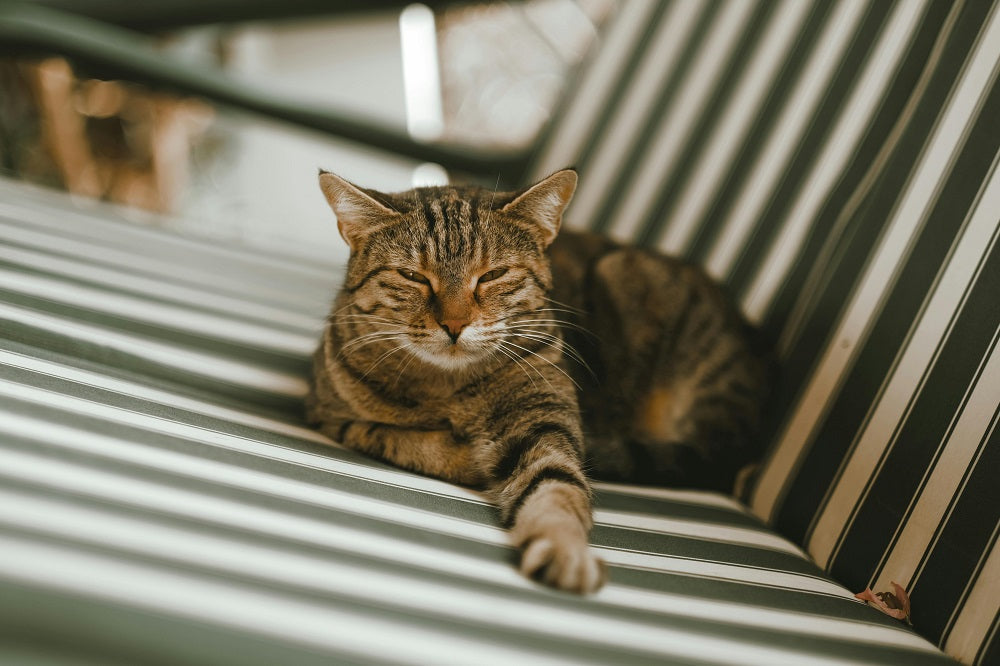In this Article
Some cats seem to narrate their entire day—chirping at birds, commenting on dinner, and discussing the state of their litter box. Others communicate in near silence, relying on posture and eye contact. Vocalization is part genetics, part environment, and part health. This expert guide explains why cats vocalize, which breeds are most (and least) chatty, what those sounds mean, and how to respond so your home stays calm and your cat feels understood.
What Drives Feline Vocalization?
Cats evolved a wide acoustic range—meows, trills, chatters, yowls—primarily for communicating with humans and kittens. Adult-to-adult meowing is rare in feral contexts; it’s a behavior that flourishes around people because it works. Over time, breeders selected for temperament traits that often included talkativeness (Siamese and Oriental-type cats) or serenity (British Shorthair). But breed is only one piece of the puzzle. Age, sex (especially intact cats), time of day, routine predictability, and medical status are equally important.
Common “Messages” Hidden in Meows
- Attention & Affiliation: Soft chirps and trills often signal greetings or “follow me.”
- Frustration / Barrier Frustration: Repetitive meows at a closed door mirror a cat’s desire to control territory or access.
- Hunger & Anticipation: Rapid, high-pitched meows near feeding time are learned cues reinforced by owners.
- Stress & Uncertainty: Longer, more drawn-out sounds can emerge with environmental changes (new pets, moving, remodeling).
- Pain or Medical Causes: Sudden increases in vocalization—especially at night—warrant a veterinary check.
Nature Meets Nurture
Even within talkative breeds, individuals vary widely. Kittens raised in quiet homes often vocalize less than littermates raised around children or highly responsive owners. Reinforcement teaches cats which sounds get results. In practice, that means your daily patterns—eye contact, treats after meowing, door-opening on demand—shape your cat’s “language skills” as much as genetics.
Talkativeness by Breed (Comparative Index)
Each bar below represents a relative tendency to vocalize based on breed-type temperament and owner-reported behavior. Individuals may differ, but the pattern helps set expectations.
Breed Profiles: What to Expect (and How to Respond)
Remember that “talkative” is not the same as “needy” or “anxious.” Many chatterbox breeds are simply engaged companions. Use the tips under each profile to channel your cat’s communication into predictable, low-stress routines.
Siamese & Oriental Shorthair
Style: Clear, human-directed meows and yowls; ongoing “conversation,” especially when routines shift. Why: Strong social bonding and high curiosity. What helps: Predictable schedules, puzzle feeders, and structured play twice daily. Reinforce quiet approaches by greeting and rewarding before meowing escalates.
Sphynx
Style: Friendly trills and soft meows; frequent “check-ins.” Why: People-oriented, sensitive to temperature and touch. What helps: Warm sleeping spots, skin-care routines, and frequent short play bursts rather than one long session.
Bengal
Style: Chirps, chatters (especially at windows), occasional loud protest if bored. Why: High prey drive and energy. What helps: Vertical space, daily hunt–play–eat cycles, outdoor views (bird feeders), and clicker training to redirect “door politics.”
Maine Coon
Style: Sweet chirps and trills more than classic meows; social commentary without drama. Why: Affable temperament. What helps: Grooming-as-bonding, slow feeder toys, supervised water play for enrichment.
Burmese & Tonkinese
Style: Warm, talkative interactions; “follow you around” commentary. Why: Human-focused, adaptable. What helps: Teach a “settle” mat behavior for cooking or desk time; reward calm presence near you.
Russian Blue
Style: Generally quiet; whispers of meows paired with intense eye contact. Why: Reserved nature; attentiveness without fanfare. What helps: Gentle introductions to visitors, safe retreat spaces, and play that avoids over-arousal.
British Shorthair & Ragdoll
Style: Low-key verbal output; communicate via proximity, blinking, and posture. Why: Calm, even-tempered. What helps: Structured cuddle windows and low-pressure play (wand toys, scent games).
Training for Quieter, Happier Conversations
Environmental Enrichment That Lowers Vocalization
- Foragers & puzzles: Split meals into 2–4 stations; rotate 2–3 puzzle types weekly.
- Vertical territory: Window perches and cat trees convert “I want out!” meows into bird-watching focus.
- Scent & texture: Cat-safe herbs (silvervine, valerian) and rotating textures (paper bags, tunnels) prevent boredom.
- Boundaries with love: Close office doors during calls, but park a warm bed nearby so “door meows” fade.
Health Red Flags Hiding Behind “Talkative”
Behavior pros assess medical causes early, especially when vocalization changes rather than simply continues. Watch for:
- Sudden increase in volume/frequency without new stressors.
- Night yowling in seniors (possible cognitive dysfunction, pain, or hypertension).
- Weight loss + appetite swings alongside hyperactivity (possible hyperthyroidism).
- Overgrooming, hiding, or decreased play paired with new meowing (pain, anxiety).
- Hoarse or raspy voice (laryngeal irritation, infection, or overuse).
Neutering & Seasonality
Intact cats often yowl during mating seasons, especially at night or near windows. Spay/neuter typically reduces these drives and the vocalization that accompanies them.
Real-World Scenarios (and What to Do)
“My Siamese narrates everything while I work.”
Schedule three micro-interactions per hour (30–60 seconds each) where you initiate: eye contact, a few strokes, or a quick toss of a toy. Between those intervals, use a “work mat” cue. Reward your cat for lying on the mat with quiet praise or a single treat. This converts constant commentary into predictable check-ins.
“My Bengal yowls at doors and windows.”
Give the behavior a job. Install a window perch facing a feeder outside and pair it with hunt–play sessions. Teach “target” to a perch or box and pay generously when your cat chooses that spot instead of the door. A daily scent trail (drag a treat in a zigzag path) also channels foraging instinct away from meowing.
“My senior cat started meowing at 2 a.m.”
Rule out pain, hypertension, and thyroid disease. Then, adjust the last play/meal timing and add a low night light to reduce disorientation. Avoid reinforcing the behavior at night; schedule cuddle time before bed and again in the morning so your cat learns when attention comes.
“My quiet British Shorthair suddenly got loud.”
A temperament shift in typically quiet breeds is especially informative. Track context (time, location, triggers) for 3–5 days and book a veterinary check. If health clears, evaluate environmental changes (new furniture, odors, visitors) and reintroduce predictability: same feeding and play windows, same resting spots.
Fast Reference: Tips by Temperament
These “micro-prescriptions” keep interventions simple and repeatable. The more consistent your response, the faster the meowing patterns stabilize.
FAQ: Your Most Common Vocal Questions
Is my cat “manipulating” me?
Not in a human sense. Cats repeat behaviors that pay off. If meowing reliably opens doors or produces food, you’ve trained a smart communicator. Change the pattern—reward quiet alternatives—and communication shifts quickly.
Can I teach a vocal cat to be quiet?
You can teach when to speak and when to settle. Pair predictable routines with reinforced quiet moments. Provide enough physical and cognitive activity that your cat has fewer reasons to “fill the silence.”
Do certain sounds mean pain?
There’s no single “pain meow,” but abrupt changes—especially night yowling in seniors or meowing during touch or jumping—deserve a vet exam. Treat underlying issues first; training comes second.
Are quiet breeds healthier?
Quiet doesn’t equal healthier—just different temperament. Health depends on genetics, diet, environment, and preventive care. Vocal change, not baseline quietness, is the medical red flag.

